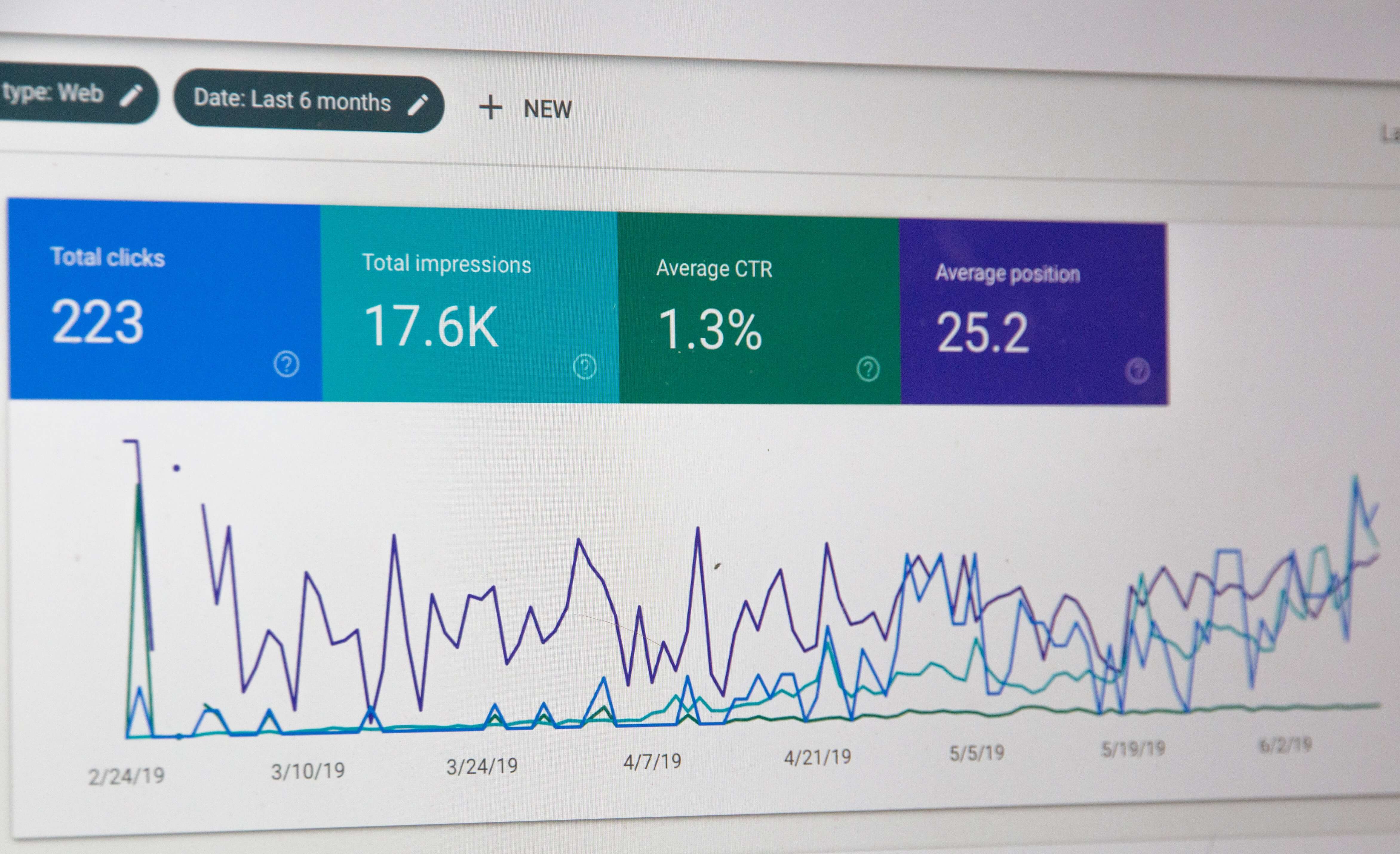7 Tips for Successful Campaign Management in Digital Marketing
7 Tips for Successful Campaign Management in Digital Marketing
Digital marketing campaigns can be a powerful way to reach your target audience and drive conversions. But with so many different channels and tactics available, it can be challenging to manage campaigns effectively. In this blog post, we'll share 7 tips for successful campaign management in digital marketing, so you can achieve your business goals and boost your ROI.
Set Clear Goals and Objectives

Setting clear goals and objectives is a fundamental step in successful campaign management. Clearly defining what you want to achieve with your digital marketing campaign provides a sense of direction and purpose. Whether your goals are to increase brand awareness, drive website traffic, generate leads, or boost sales, make sure they are specific, measurable, attainable, relevant, and time-bound (SMART).
Start by identifying the key performance indicators (KPIs) that align with your goals. These could include metrics such as website visits, click-through rates, conversion rates, or revenue. By having measurable objectives, you can track the progress of your campaign and evaluate its success.
Additionally, it is essential to align your goals with your overall business objectives. By understanding how your campaign contributes to the bigger picture, you can ensure that your efforts are focused and impactful. Regularly revisit and reassess your goals throughout the campaign to make adjustments or refine your strategies as needed.
Define Your Target Audience
Defining your target audience is crucial for effective campaign management in digital marketing. Understanding who your ideal customers are and what motivates them allows you to tailor your messaging and tactics to resonate with them.
Start by conducting market research to gather insights about your target audience. Identify their demographics, interests, preferences, and pain points. By creating detailed buyer personas, you can develop a deep understanding of their needs and motivations.
Segment your target audience based on common characteristics and behaviors. This segmentation allows you to create personalized and targeted PPC campaign management services that are more likely to capture attention and drive engagement. Consider factors such as age, gender, location, interests, and purchasing behavior when segmenting your audience.
Moreover, leverage data analytics and customer feedback to gain further insights into your audience. Use tools like website analytics, social media analytics, and customer surveys to gather valuable information about their online behavior, preferences, and perceptions.
By defining your target audience, you can tailor your PPC campaign management services content, choose the appropriate marketing channels, and craft compelling messages that resonate with their needs and aspirations. This targeted approach increases the effectiveness of your digital marketing campaigns and enhances your chances of achieving your goals.
Conduct Thorough Keyword Research

Conducting thorough keyword research is a crucial aspect of successful PPC campaign management services in digital marketing. Keywords are the foundation of your online presence, as they determine how your target audience finds your content through search engines. By identifying the right keywords, you can optimize your website, ad campaigns, and content to increase visibility and attract relevant traffic.
Start by brainstorming a list of keywords relevant to your business, products, or services. Consider the terms and phrases that your target audience would likely use when searching for information related to your offerings. Use keyword research tools like Google Keyword Planner, SEMrush, or Moz Keyword Explorer to expand your list and discover additional keyword opportunities.
Next, analyze the search volume and competition level for each keyword. Look for keywords with a balance between high search volume and manageable competition. Long-tail keywords, which are more specific phrases, often present opportunities for targeting niche audiences and ranking higher in search results.
Furthermore, consider the intent behind the keywords. Are users looking for information, products, or services? Understanding user intent allows you to align your content and ad copy with their needs and expectations. Aim to incorporate a mix of informational, navigational, and transactional keywords into your campaigns to cater to different stages of the buyer's journey.
Regularly monitor and refine your keyword strategy based on performance data. Identify high-performing keywords and optimize your campaigns around them. Conversely, identify underperforming keywords and either optimize or replace them with more effective alternatives. By conducting thorough keyword research, you can improve your campaign's targeting, relevance, and overall success.
Develop Compelling Ad Copy and Creative
Developing compelling ad copy and creative content is essential for capturing the attention of your target audience and driving engagement. Effective ad copy communicates the value proposition of your products or services, entices users to take action, and stands out in a crowded digital landscape.
Start by understanding your audience and their motivations. Craft your ad copy and creative in a way that resonates with their needs, desires, and pain points. Use persuasive language, highlight key benefits, and address their specific pain points to create an emotional connection. Emphasize what sets your brand apart from competitors and why users should choose your offering.
Additionally, keep your ad copy concise, clear, and compelling. Use attention-grabbing headlines and compelling calls to action to encourage users to click on your ads. Experiment with different variations of ad copy to test what resonates best with your target audience.
When it comes to visual creative content, consider the platform and format where your ads will be displayed. Use eye-catching visuals, such as high-quality images, videos, or infographics, that align with your brand identity and capture attention. Ensure that your visuals are relevant to your messaging and convey your value proposition effectively.
A/B testing is crucial for optimizing your ad copy and creative content. Test different variations of headlines, ad copy, visuals, and calls to action to identify the most effective combinations. Continuously monitor the performance of your ads and make data-driven adjustments to improve click-through rates, conversion rates, and overall campaign success.
Test and Optimize Your Campaigns Regularly

Regularly testing and optimizing your campaigns is a critical component of successful campaign management in digital marketing. Testing allows you to gather valuable data, make informed decisions, and improve the performance of your marketing campaign management over time. By continuously experimenting and optimizing, you can maximize your return on investment and drive better results.
One key aspect of testing is conducting A/B tests. This involves creating multiple variations of your marketing campaign management and comparing their performance to identify which elements are most effective. You can test different ad headlines, visuals, calls-to-action, landing page layouts, or even targeting options. By measuring the impact of these variations on key performance indicators such as click-through rates, conversion rates, or engagement metrics, you can make data-driven decisions and optimize your marketing campaign management for better results.
Another important testing strategy is conducting split tests or multivariate tests. Split testing involves dividing your audience into different segments and exposing each segment to a different version of your campaign. This allows you to compare the performance of different strategies or tactics simultaneously. Multivariate testing, on the other hand, involves testing multiple elements within a single campaign simultaneously. These tests provide insights into how different combinations of variables impact campaign performance and help you identify the most effective combinations.
It's crucial to establish a regular testing cadence to ensure continuous improvement. Set a schedule for testing and dedicate resources to collect and analyze data. Monitor the performance of your campaigns regularly, identify areas for improvement, and implement changes based on the insights gained from testing. By adopting a systematic approach to testing and optimization, you can enhance the effectiveness of your campaigns and achieve better results over time.
Leverage Data and Analytics for Insights
Leveraging data and analytics is a fundamental practice for successful campaign management in digital marketing. Data provides valuable insights into audience behavior, campaign performance, and overall marketing effectiveness. By analyzing and interpreting this data, you can gain a deep understanding of your audience, make informed decisions, and optimize your campaigns for better results.
Start by setting up proper tracking mechanisms to capture relevant data. Implement analytics tools like Google Analytics or other marketing automation platforms to track key metrics such as website traffic, conversions, click-through rates, or engagement metrics. Use UTM parameters or tracking codes to identify the sources or campaigns that drive specific actions.
Once you have collected the data, analyze it to uncover patterns, trends, and insights. Look for patterns in audience demographics, behavior, or preferences that can inform your targeting and messaging strategies. Identify the channels or campaigns that drive the most significant results and allocate resources accordingly. Dive deeper into conversion funnels to identify bottlenecks or areas where improvements can be made to enhance the user experience and drive more conversions.
Data can also help you understand the customer journey and touchpoints where users interact with your brand. Analyze the attribution of conversions to determine which channels or campaigns play a significant role in driving conversions. This information enables you to allocate your budget effectively and prioritize the channels that generate the highest return on investment.
Regularly review and update your data analysis strategy to ensure you are leveraging the most relevant and up-to-date data. Keep track of key performance indicators and create reports or dashboards to visualize the data and communicate insights to stakeholders. By making data-driven decisions, you can optimize your campaigns, improve targeting, and achieve better results in your digital marketing efforts.
Monitor and Adjust Your Budget as Needed

Monitoring and adjusting your budget is a crucial aspect of successful campaign management in digital marketing. As your campaigns progress, it's essential to regularly review your budget allocation to ensure optimal resource utilization and maximize your return on investment (ROI).
Start by closely monitoring the performance of your campaigns and tracking key performance indicators (KPIs) such as cost per acquisition (CPA), return on ad spend (ROAS), or lifetime value (LTV) of customers. Compare these metrics to your campaign objectives and financial targets to assess the effectiveness of your budget allocation.
Identify areas where your budget is generating the desired results and allocate additional resources to capitalize on those opportunities. Likewise, if certain campaigns or channels are underperforming, consider reallocating funds to more successful areas or adjusting your strategy to optimize results.
Regularly evaluate the cost-effectiveness of different marketing channels and tactics. Some channels may deliver higher conversions or better engagement rates at a lower cost, allowing you to reallocate your budget for maximum impact. Keep in mind that the digital marketing landscape is dynamic, and trends may shift over time, so continuously monitor and adjust your budget to align with the changing market conditions.
Consider leveraging automation tools and platforms that provide budget management functionalities. These tools can help streamline the process of monitoring and adjusting your budget by providing real-time data insights and enabling automated budget optimization based on predefined rules or algorithms.
Remember that budget monitoring and adjustment should be an ongoing process. Regularly review your budget, track your campaign performance, and adjust your allocation to ensure optimal resource utilization and drive better results.
Conclusion: Putting These Tips into Practice for Digital Marketing Success
Successful campaign management in digital marketing requires a strategic approach and diligent implementation of key practices. By following the tips outlined in this blog, you can enhance the effectiveness of your campaigns and achieve digital marketing success.
Start by setting clear goals and objectives for your campaigns. Define what you want to achieve and align your efforts accordingly. This will provide direction and ensure that your campaigns are purpose-driven and focused on delivering results.
